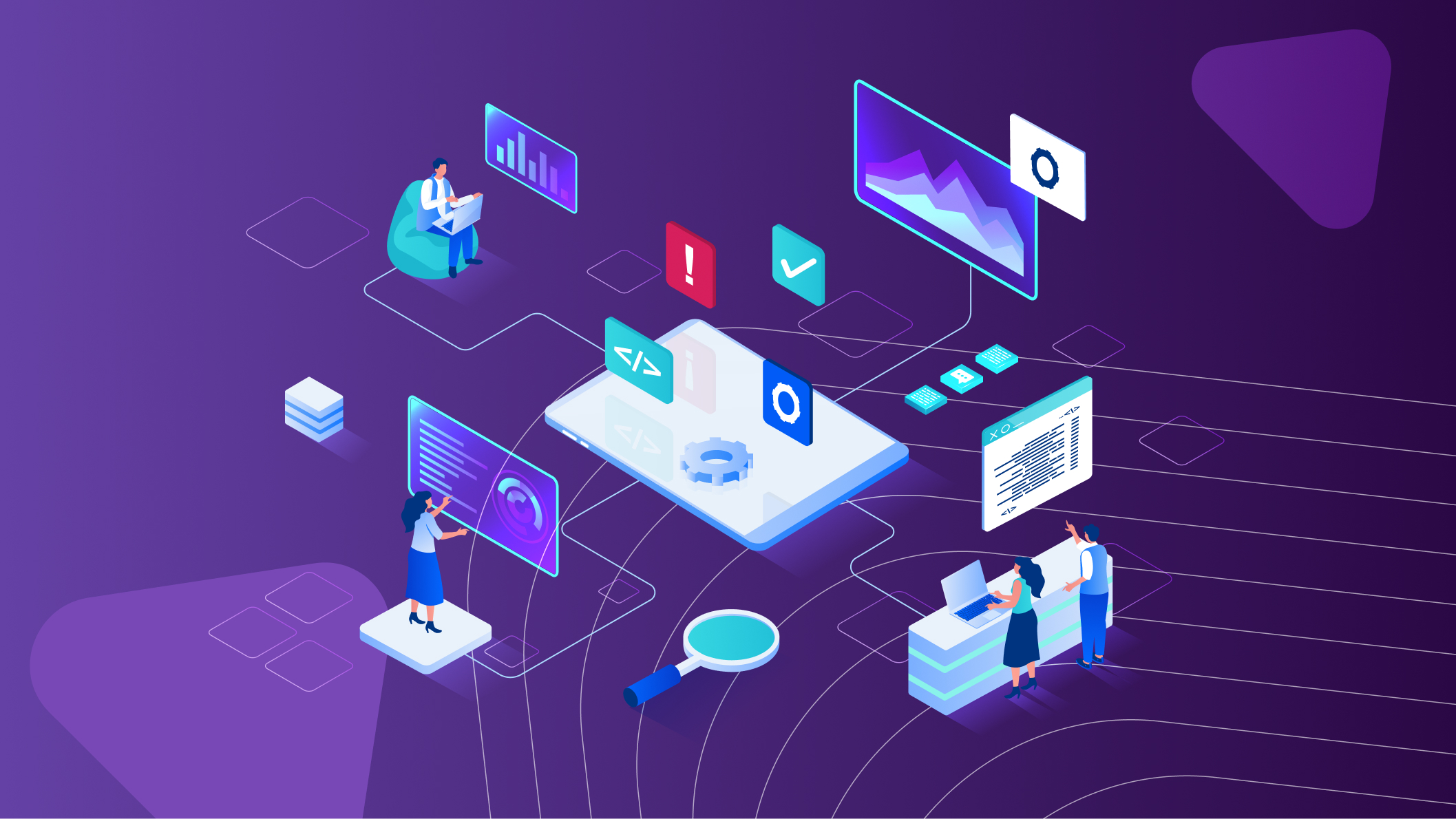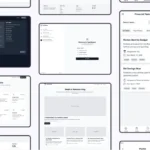Building software that delivers results is more than just writing code. It’s about solving real-world problems with strategic planning, collaboration, and execution. At Poterby Tech, we understand that a streamlined, transparent, and agile development process is the foundation for successful digital products—be it a mobile app, web platform, SaaS tool, or enterprise software.
In this post, we walk you through our development process step-by-step. Whether you’re a startup founder, small business owner, or CTO of a growing enterprise, understanding how we work helps you make informed decisions and sets expectations for a smooth and successful collaboration.
Why a Structured Development Process Matters
Before diving into the steps, it’s important to understand why our development methodology matters:
-
✅ Reduces time-to-market
-
✅ Improves product quality and usability
-
✅ Minimizes scope creep and budget overruns
-
✅ Enhances collaboration and transparency
-
✅ Ensures scalability and long-term maintenance
Now, let’s break it down.
Step 1: Discovery & Requirements Gathering
The first and arguably most critical stage is discovery. This is where we define what we’re building and why.
What Happens in This Phase?
-
Initial consultation with stakeholders to understand goals
-
Define project scope, objectives, and target users
-
Identify key features and must-haves
-
Conduct market research and competitor analysis
-
Perform a technical feasibility assessment
-
Document everything into a clear Project Requirements Document (PRD)
SEO Keywords Targeted:
software discovery phase, requirements gathering, software planning process
📌 Client Benefit: You get clarity on project goals, avoid misalignment, and ensure everyone is on the same page from day one.
Step 2: UI/UX Design
Great products start with great design. Once we understand what we’re building, our creative team brings it to life visually.
What’s Included?
-
User journey mapping and wireframes
-
Interactive prototypes using tools like Figma
-
Mobile-first, responsive design principles
-
UI kits and design systems for consistency
-
Client review and approval cycles
SEO Keywords Targeted:
UI/UX design process, responsive design, user interface prototyping
📌 Client Benefit: A clear visual representation of your product’s look and feel before development begins—saving time and reducing rework.
Step 3: Software Architecture & Tech Stack Planning
Before any code is written, we define the blueprint for your software.
Deliverables in This Phase:
-
Selection of technology stack (e.g., React, Node.js, Laravel, Flutter, etc.)
-
Decide between monolithic or microservices architecture
-
Database schema design and cloud infrastructure planning
-
Set up CI/CD pipelines and version control (e.g., GitHub, GitLab)
-
Security protocols and scalability strategy
SEO Keywords Targeted:
software architecture planning, tech stack selection, scalable app development
📌 Client Benefit: You get a future-proof architecture that supports growth and changes down the road.
Step 4: Agile Development & Sprint Cycles
At Poterby Tech, we use Agile and Scrum methodologies to break the project into manageable chunks.
How We Run Our Sprints:
-
Split work into 2-3 week sprints
-
Define sprint goals and deliverables in Sprint Planning
-
Track progress using tools like Jira or Trello
-
Perform daily stand-up meetings (optional for clients)
-
End each sprint with code reviews and demos
Development Focus Areas:
-
Frontend development (React, Vue.js, etc.)
-
Backend development (Node.js, Django, Laravel, etc.)
-
API development and third-party integrations
-
Mobile app development (Flutter, React Native)
SEO Keywords Targeted:
agile software development process, sprint cycle in development, iterative software build
📌 Client Benefit: You get to see progress regularly, provide feedback, and adapt as needed—ensuring the product evolves in line with your vision.
Step 5: Testing & Quality Assurance (QA)
We take QA seriously because a great user experience starts with a bug-free product.
Our QA Checklist Includes:
-
Manual testing across devices and browsers
-
Automated testing for core functionalities
-
Unit and integration tests
-
Performance testing (speed, load, etc.)
-
Security testing to identify vulnerabilities
-
UAT (User Acceptance Testing) with real users or client testers
SEO Keywords Targeted:
software QA testing process, automated testing, cross-browser testing
📌 Client Benefit: A polished, stable product that minimizes post-launch issues and support costs.
Step 6: Deployment & Launch
Once the product passes QA, it’s time to go live.
Deployment Process:
-
Set up production servers (AWS, Azure, DigitalOcean, etc.)
-
Migrate databases and environment variables
-
Configure domain, SSL certificates, and backups
-
Final pre-launch checklist testing
-
Rollout strategy: phased release or full launch
-
Monitoring setup for error tracking and analytics (e.g., Sentry, Google Analytics)
SEO Keywords Targeted:
app deployment checklist, go-live process, software launch strategy
📌 Client Benefit: A smooth, stress-free launch with your team fully supported every step of the way.
Step 7: Post-Launch Support & Maintenance
Launch is just the beginning. Software requires ongoing maintenance to stay secure, relevant, and effective.
What We Offer:
-
Bug fixes and rapid response to issues
-
Performance monitoring and optimization
-
Security updates and patches
-
Feature enhancements based on user feedback
-
Monthly reports and analytics reviews
SEO Keywords Targeted:
software maintenance, post-launch support, application monitoring services
📌 Client Benefit: Peace of mind knowing your product remains updated, functional, and optimized for performance.
Optional: Growth Services & Consultation
Want to go further? We also offer:
-
Product strategy and business consultation
-
Digital marketing and SEO
-
UI/UX audits
-
Analytics optimization
-
Scaling advice (from MVP to enterprise)
At Poterby Tech, we don’t just build apps—we build digital solutions that empower businesses to grow, scale, and succeed. Our step-by-step development process ensures your product is thoughtfully planned, beautifully designed, and expertly built to meet today’s challenges and tomorrow’s opportunities.
Whether you’re developing a new startup MVP or transforming an enterprise system, you’ll benefit from a proven methodology that puts clarity, quality, and client collaboration at the core.
Ready to Start Your Project?
🚀 Contact us today to schedule a free consultation and get a tailored proposal. Let’s bring your idea to life—together.
Frequently Asked Questions (FAQ)
Q: How long does the full development process take?
A: It depends on the project’s complexity. A basic MVP can take 8–12 weeks, while larger platforms may span 4–6 months or more.
Q: Can I be involved during the development phase?
A: Absolutely. We encourage regular feedback and collaboration at every sprint review.
Q: What industries do you specialize in?
A: We’ve worked with clients in fintech, healthcare, e-commerce, real estate, logistics, and more.
Q: Do you sign NDAs?
A: Yes, we take confidentiality seriously and will sign an NDA before any detailed discussions.




